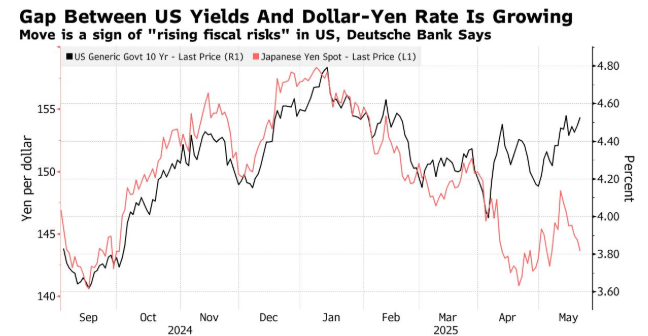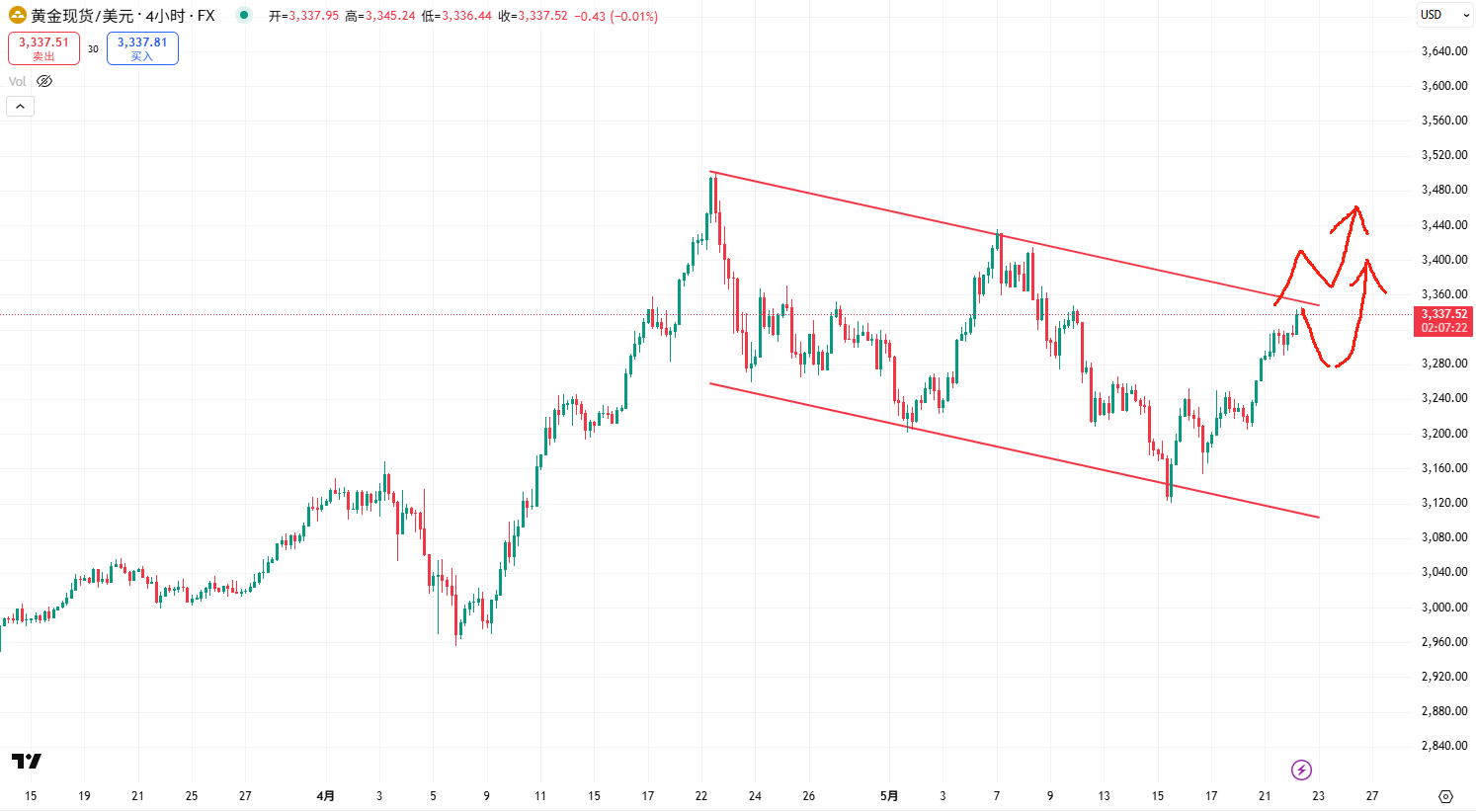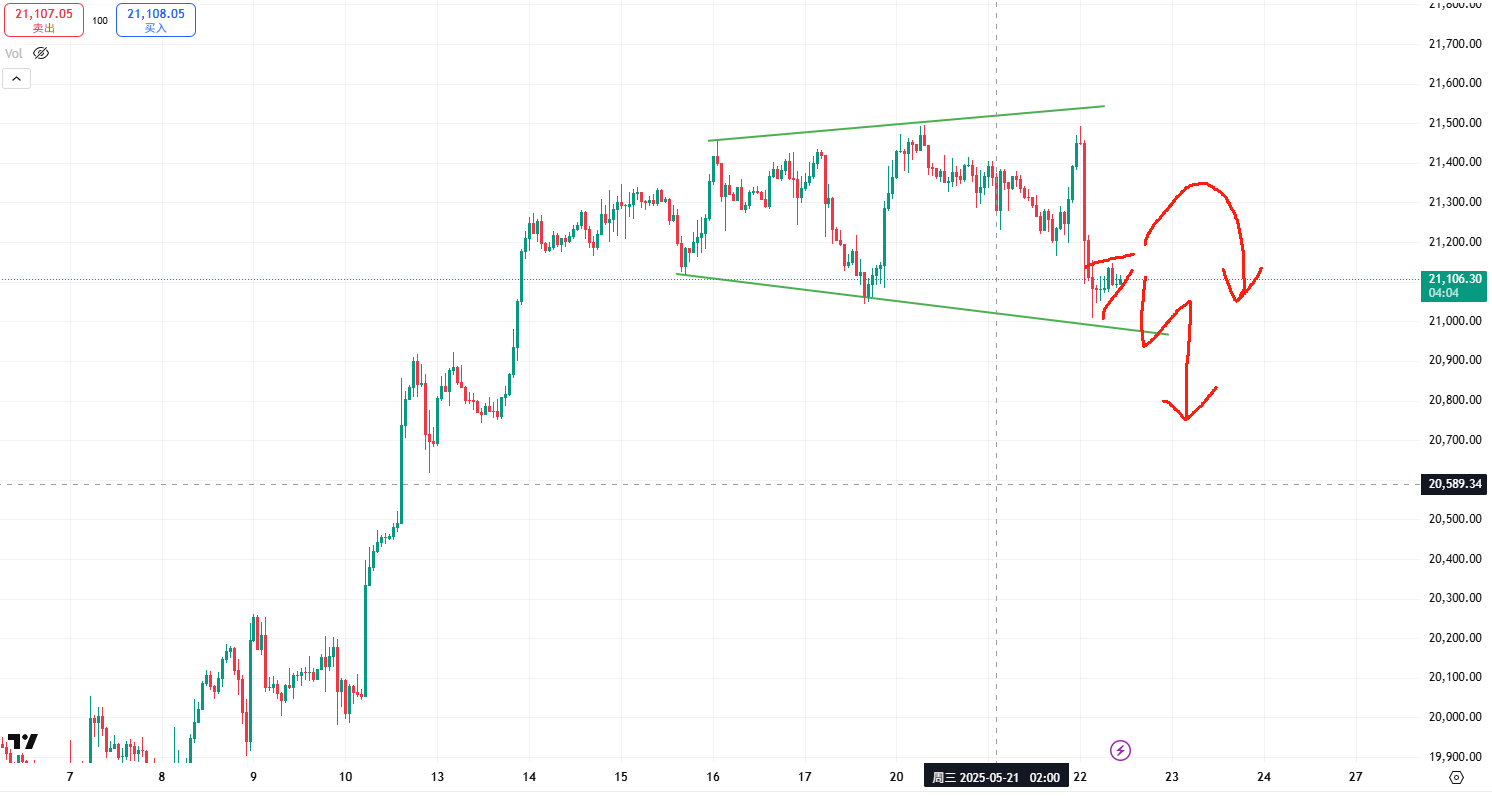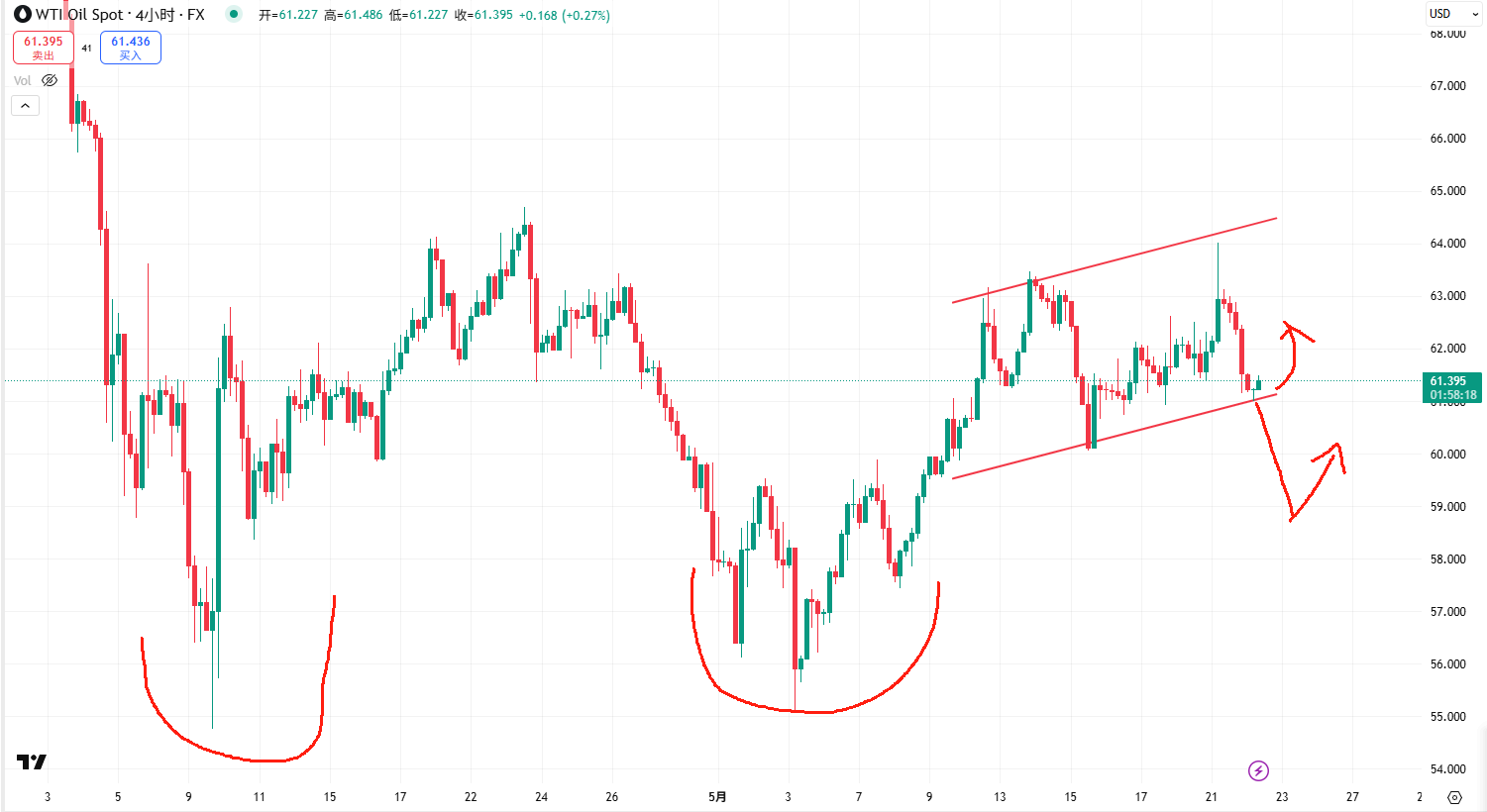George Saravelos, the global head of foreign exchange strategy at Deutsche Bank, said that the US dollar could suffer losses whether the US government falls into a fiscal crisis or an economic recession.
“Dollar fiscal tightening is the best way to describe the situation,” Saravelos wrote in a report on Monday, mimicking the so-called “dollar smile” framework proposed by Stephen Jen more than two decades ago. Upcoming budget negotiations will determine where the dollar lands on this curve.
One extreme of the left wing is a fiscal stance that is too loose, Saravelos wrote in a report on Monday. This has led to a simultaneous decline in US bonds and the dollar – as we witnessed again this morning.
The yield on the 30-year US Treasury note climbed to its highest level since November 2023 on Monday after Moody’s downgraded the country’s credit rating. Meanwhile, the dollar index fell by 0.7% at one point, with the US currency weakening against all major G10 currencies. Saravelos said that if this pattern persists, it would suggest that the market “is losing interest in financing the US deficit and the rising financial stability risks.”

He added: “At the other extreme, on the right of the frown, the pace of fiscal austerity was too fast, which although significantly reducing the deficit, forced the US into recession and led the Federal Reserve into a deep easing cycle.” The middle ground represents a soft landing, which is more favorable for the US dollar.
Before the trade war broke out this year, the market tended to follow the “dollar smile” theory, which holds that the US dollar would strengthen during periods of strong economic growth or deep recession.
However, President Donald Trump’s tariff policies have disrupted this pattern. These policies have dampened global growth expectations, weakened the dollar’s safe-haven appeal, and undermined the notion of American exceptionalism. The Bloomberg Dollar Spot Index has fallen by more than 6% so far this year.
Technical analysis:
Gold: Yesterday, the price remained within the blue and yellow zones as indicated by our plugin, without any clear signs of momentum or sweep liquidity. It fluctuated within the range of 3200-3250. Today, we suggest keeping the strategy from yesterday for one more day. For a high buy, it must recover above 3240/60 and then look for demand zones. Keep the yellow sweep liquidity buy signal below and the green buy limit order at a lower position. For detailed positions, please consult the plugin.

(Gold 15-minute chart)
The plugin is updated from 12:00 to 13:00 every trading day. If you want to experience the same plugin as shown in the chart, please contact V: Hana-fgfg and note “666” in the message.
Nasdaq: Yesterday, our sell stop operation in the blue area of the plugin reaped an 80bp profit, with a risk-reward ratio exceeding 1.5 times. Although the price rebounded significantly later and refreshed above 21,500, the risk of further decline after the liquidity sweep is considerable at present. For today’s trading, we will continue to focus on capturing short signals. For detailed positions, please consult the plugin.

(NASDAQ 15-minute chart)
The plugin is updated from 12:00 to 13:00 every trading day. If you want to experience the same plugin as shown in the chart, please contact V: Hana-fgfg and note “666” in the message.
Crude oil: Yesterday, our strategy of buying after the pullback following the blue momentum break-through brought us a profit of approximately 50 pips, with a risk-reward ratio exceeding 1.5 times. Today, we will continue to adhere to the strategy of buying after the pullback following the break-through. For detailed positions, please consult the plugin.

(Crude Oil 15-Minute Chart)
The plugin is updated from 12:00 to 13:00 every trading day. If you want to experience the same plugin as shown in the picture, please contact V: Hana-fgfg and note “666” in the message.
Today’s key economic data and events to focus on:
14:00 Germany April Producer Price Index
20:30 Canadian April Consumer Price Index
Eurozone consumer confidence index for May (preliminary reading) at 22:0